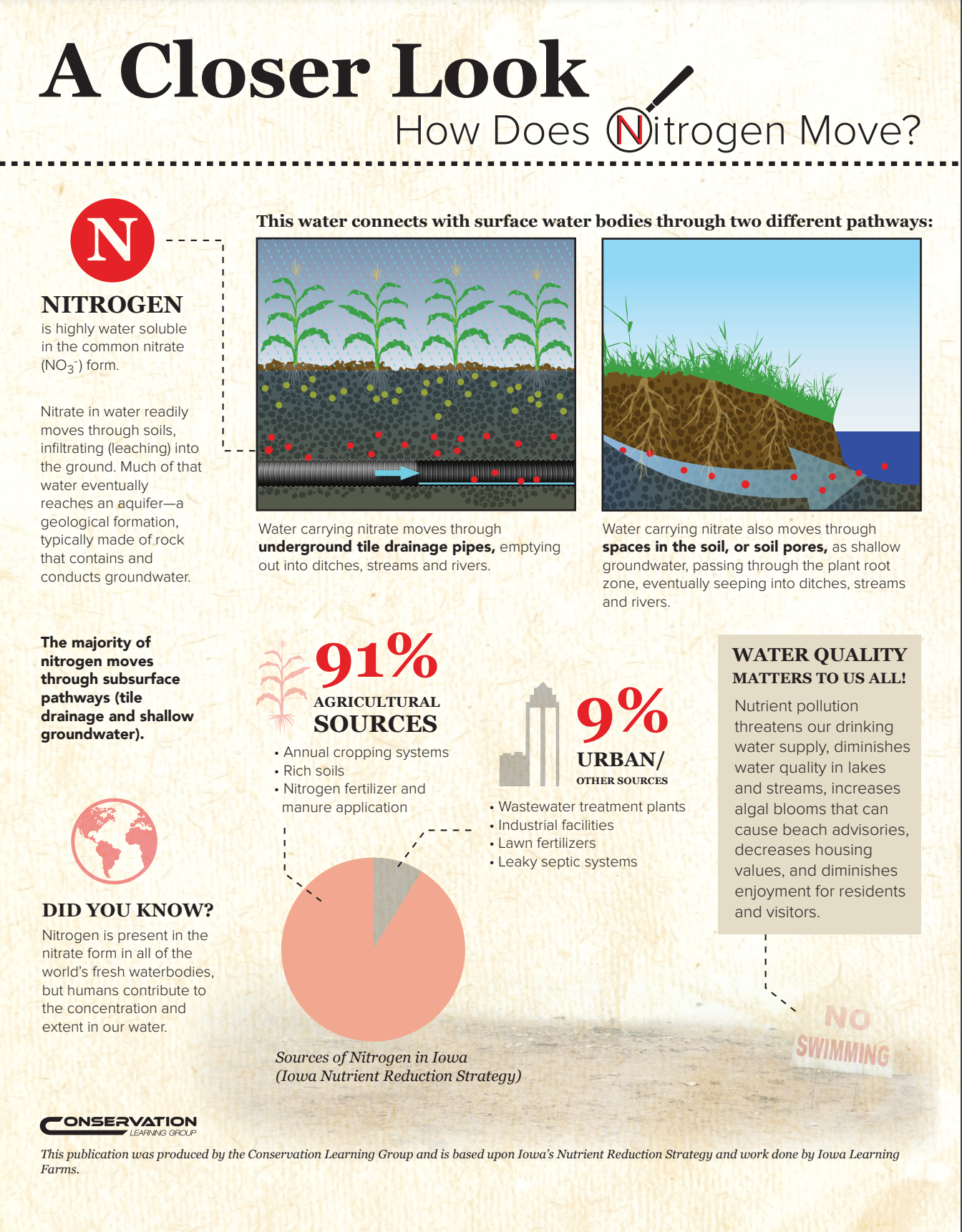Learn about sediment control basins in this 2-page report from Iowa State University Extension and Outreach.
Read MoreLearn about the role farm ponds play in water quality in this quick read 2-page PDF.
Read MoreLearn about how conservation buffers affect water quality in this 4-page report by Iowa State University.
Read MoreLearn about saturated buffers from a panel of experts in this in-depth publication.
Read MoreLearn about cleaning Iowa’s waters with saturated buffers in this Iowa State University Extension publication.
Read MoreLearn more about wetlands in this informative infographic from Iowa State University Extension.
Read MoreLearn about the unique aspects of wetlands in this infographic.
Read MoreLearn how woodchip bioreactors work to reduce nitrates and improve water quality.
Read MoreWoodchip bioreactors are a new option to reduce the amount of nitrate in drainage before it gets to local surface waters. This factsheet describes key questions relevant to this innovative approach to water quality.
Read MoreDiscussing a new conservation practice with your tenant can be challenging. To help begin the conversation, we created a new publication series with talking points and relevant research findings about specific conservation practices.
Read MoreWater Quality Matters To Us All provides insight into the attitudes and practices of agencies and stakeholders involved in protecting Iowa's water quality. Based on listening sessions between 2008-2011 with farmers, urban residents, Soil and Water Conservation District commissioners, and field staff from Natural Resources Conservation Service and the Iowa Department of Natural Resources, the book details the institutional, community, and individual impediments towards water conservation and curtailing nonpoint source pollution.
Read MoreWhere does your drinking water come from? Two new infographics from the Conservation Learning Group take a closer look at that question and how nitrogen and phosphorus move on our landscape.
Read MoreThis illustration shows the relative stream delivery of nitrogen and phosphorus from each source, with the arrows sized proportionally.
Read MoreNearly 75% of Iowa’s landscape is farmland. Land management and conservation practices utilized by farmers and landowners play a key role in improving water quality by reducing loss of nutrients to waterways.
Read MoreNot all algae are harmful, but the most common harmful algal blooms in Iowa are comprised of blue-green algae—also known as cyanobacteria. Learn more in this infographic.
Read MoreThe Iowa Nutrient Reduction Strategy is focused on reducing nitrogen and phosphorus in Iowa waters. Farmers, landowners, municipalities, agencies, conservation organizations and everyday Iowans are collaborating to make changes to help meet nutrient reduction goals. This publication addresses some frequently asked questions regarding the Iowa Nutrient Reduction Strategy.
Read More






















